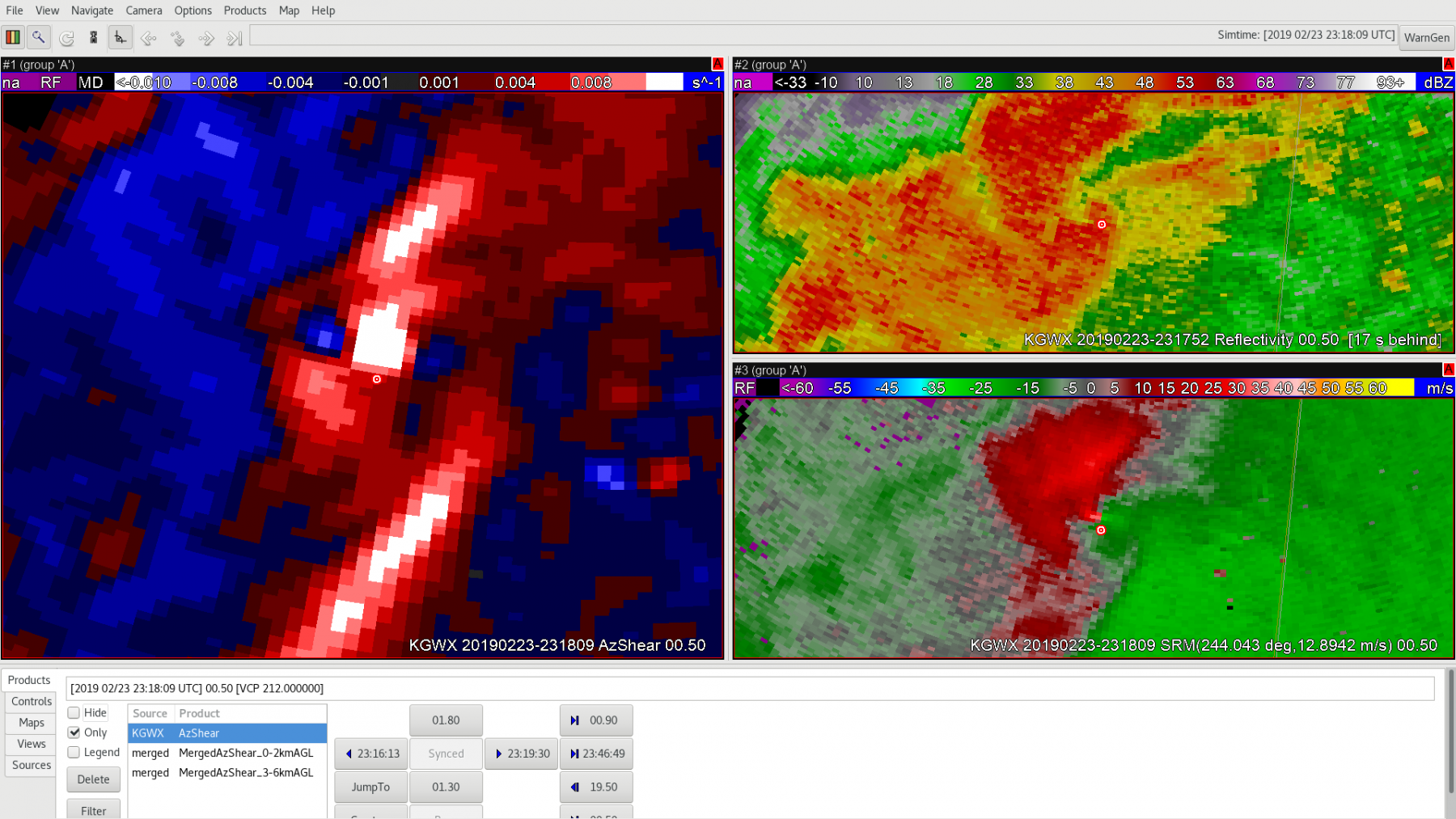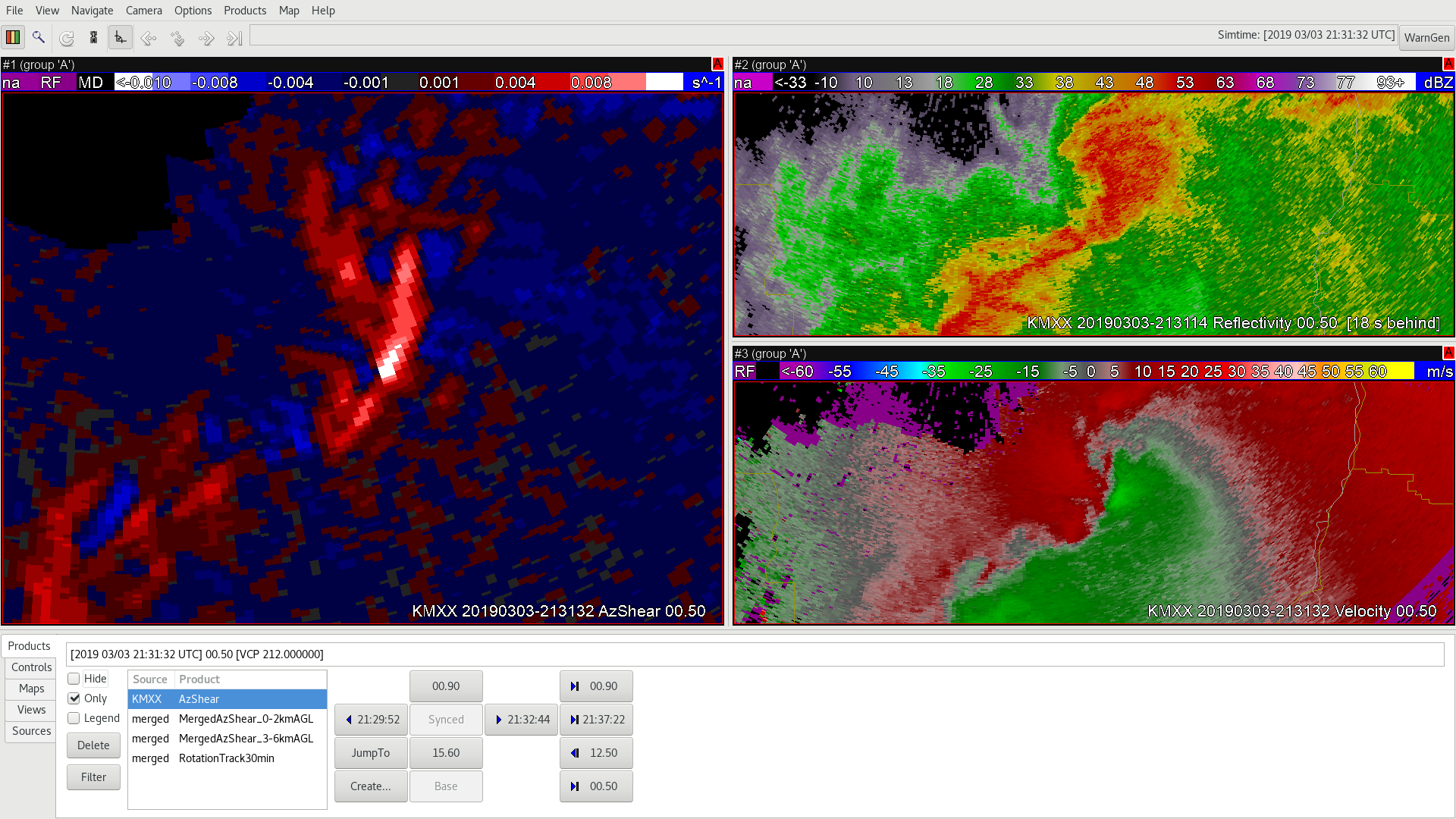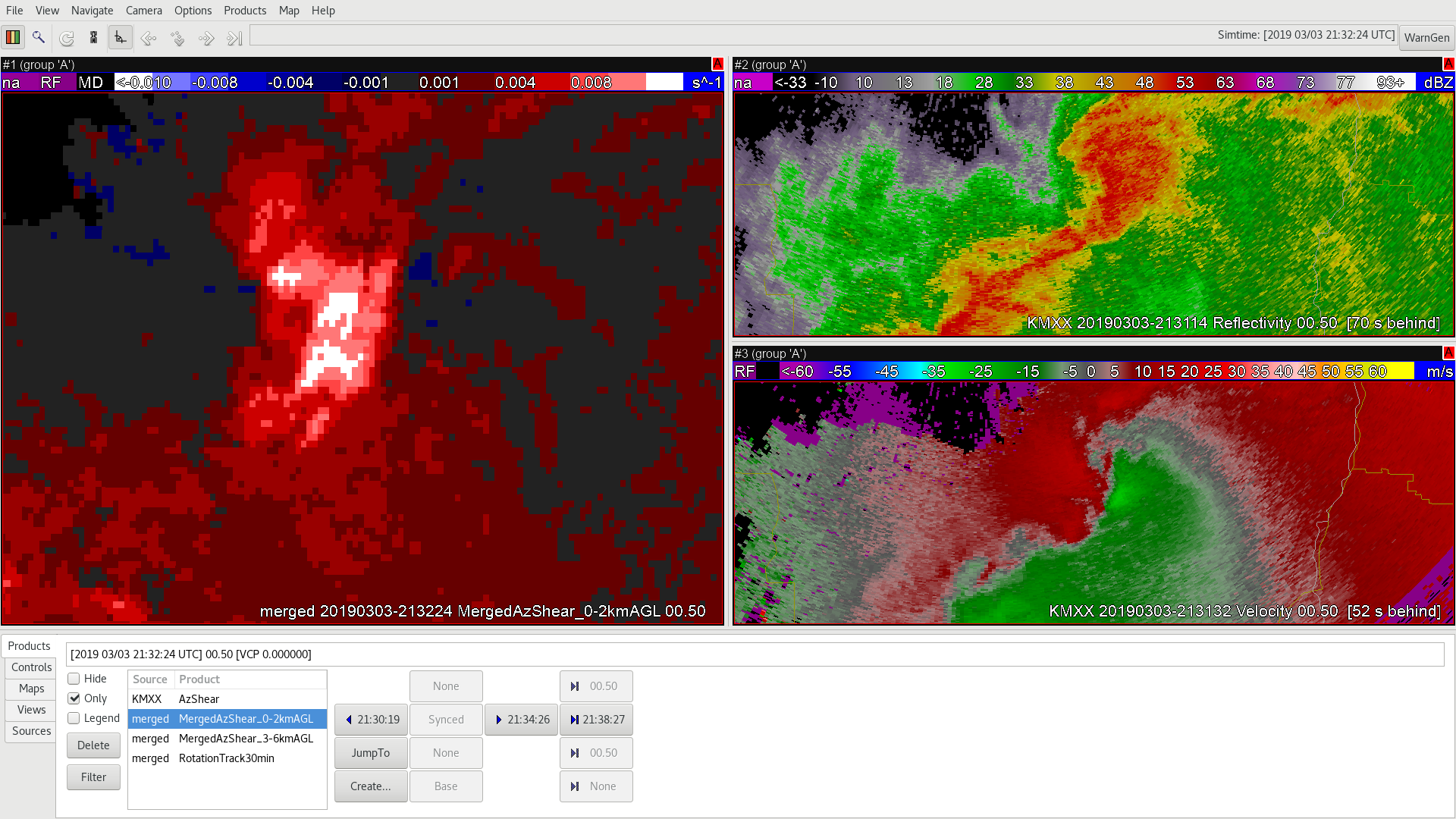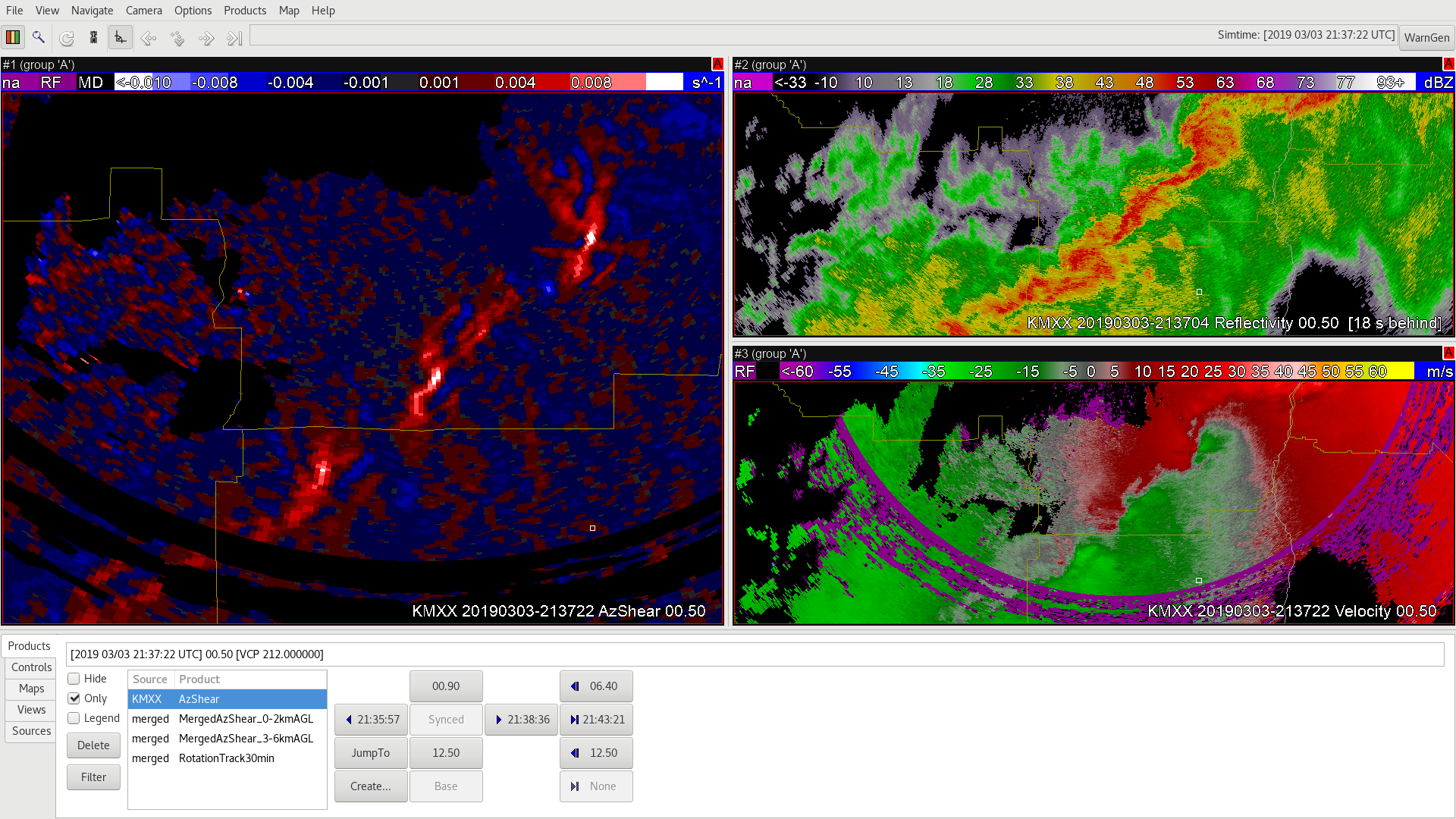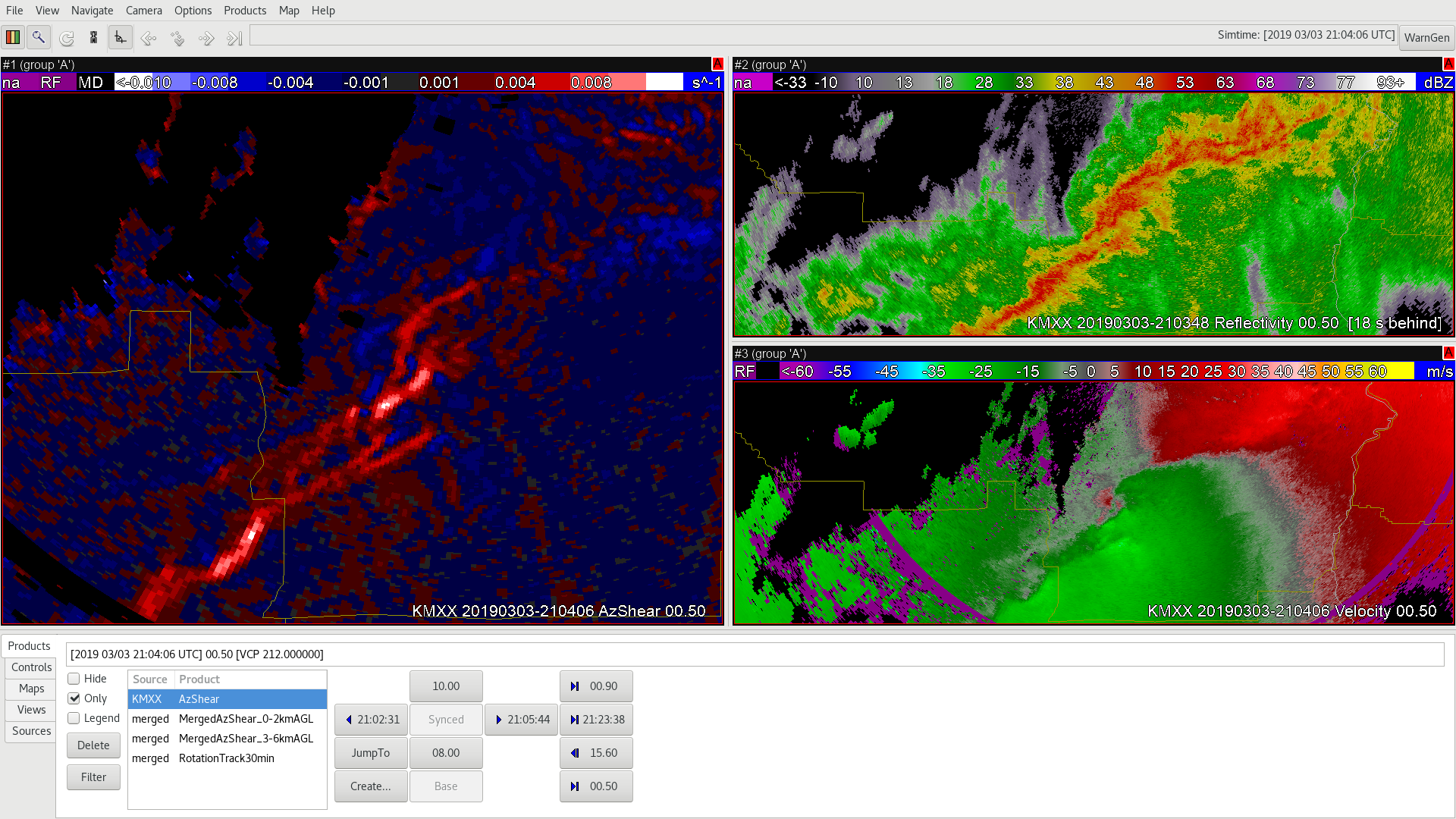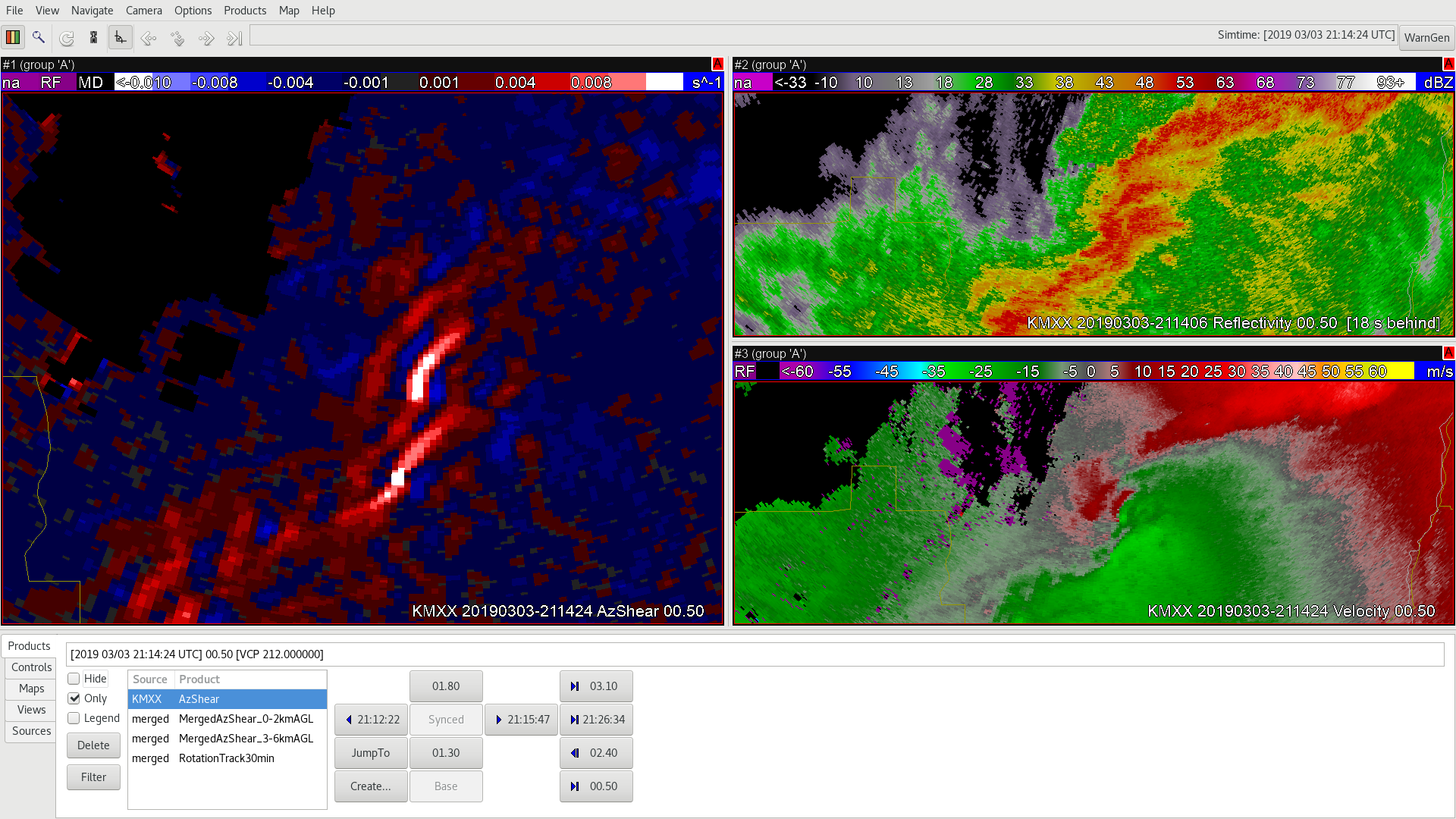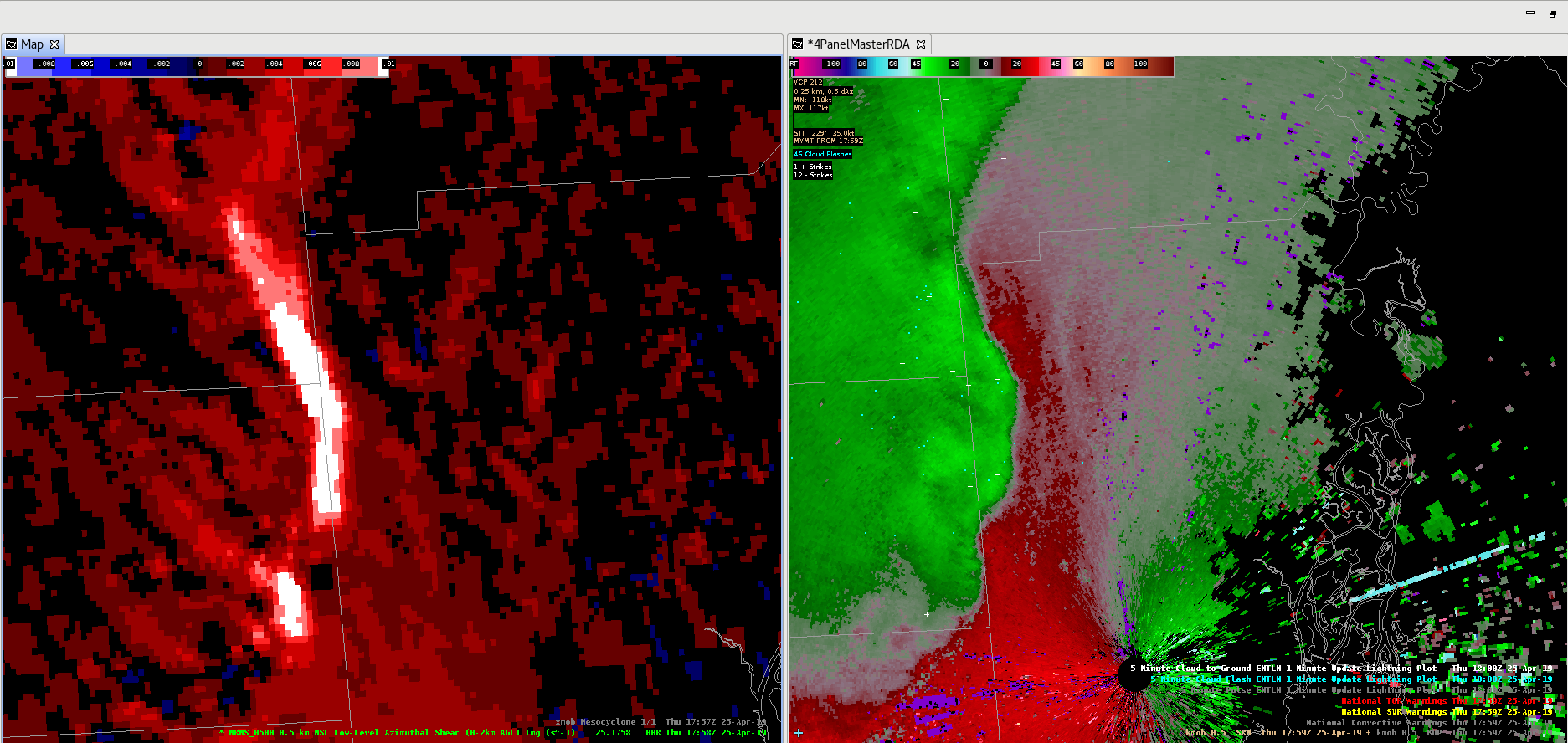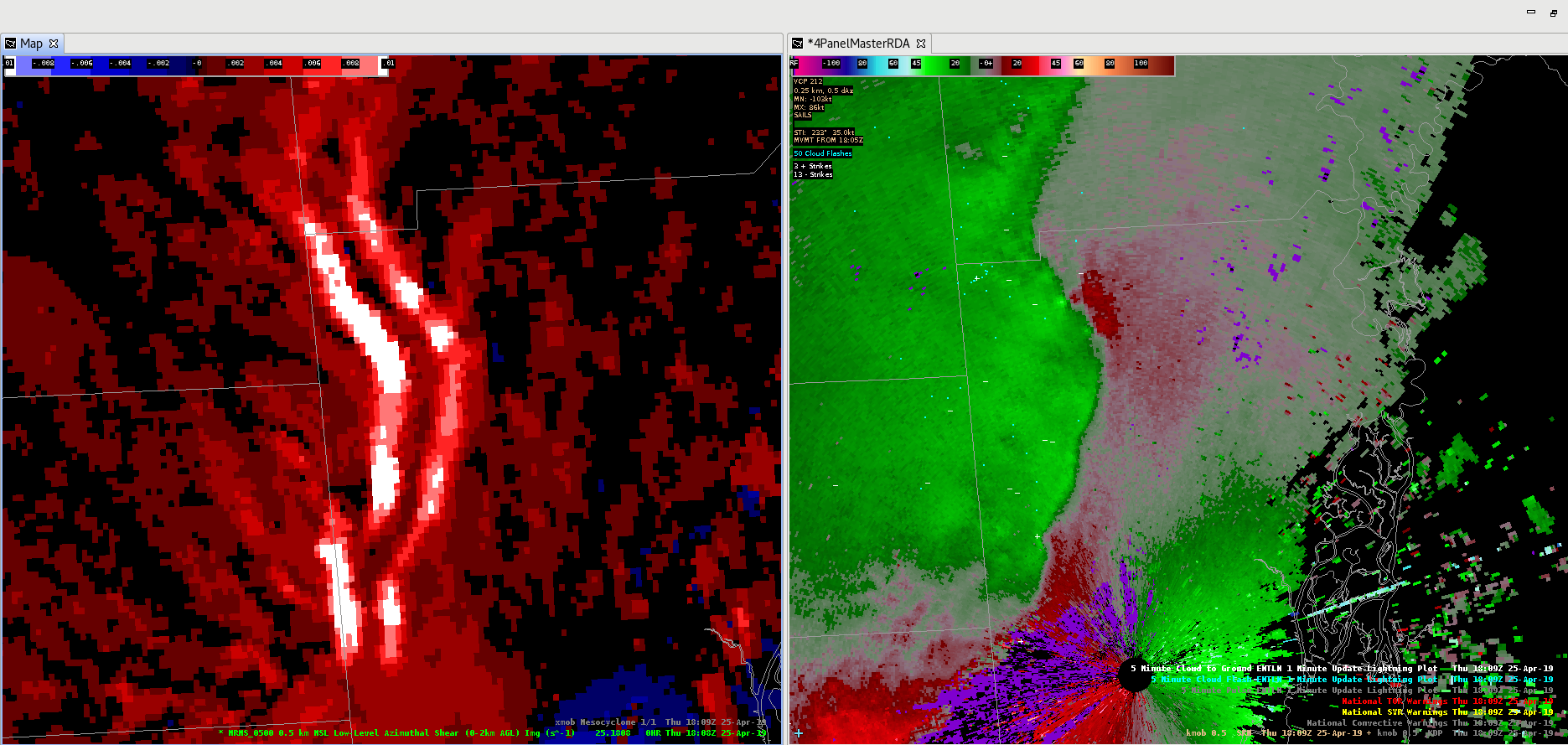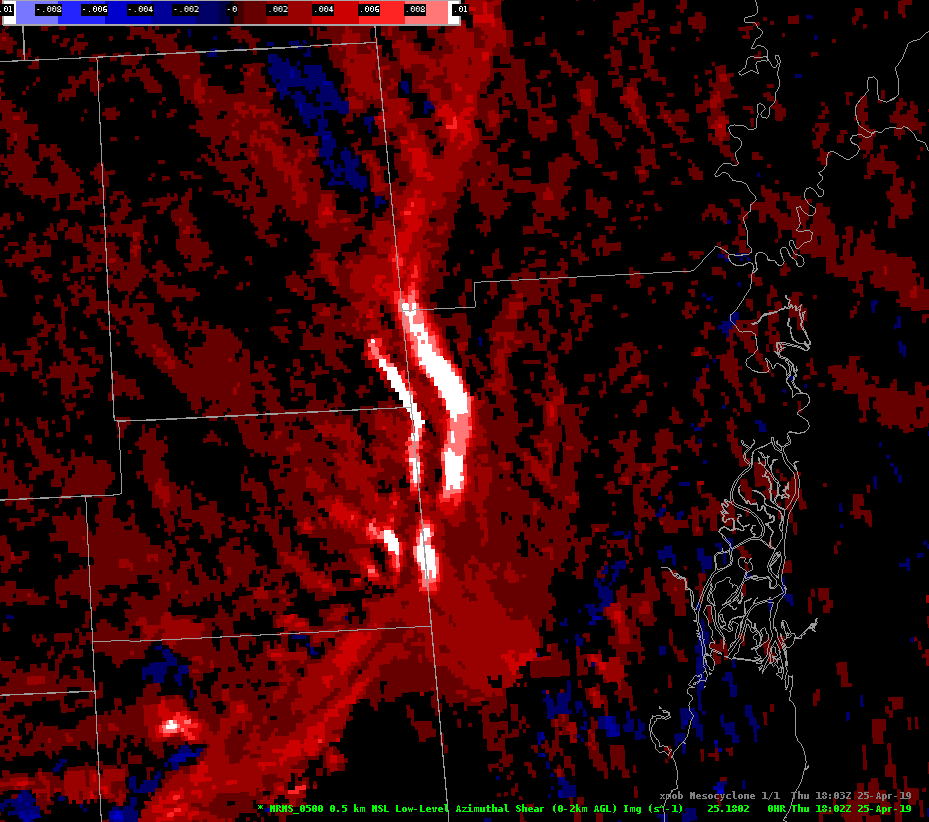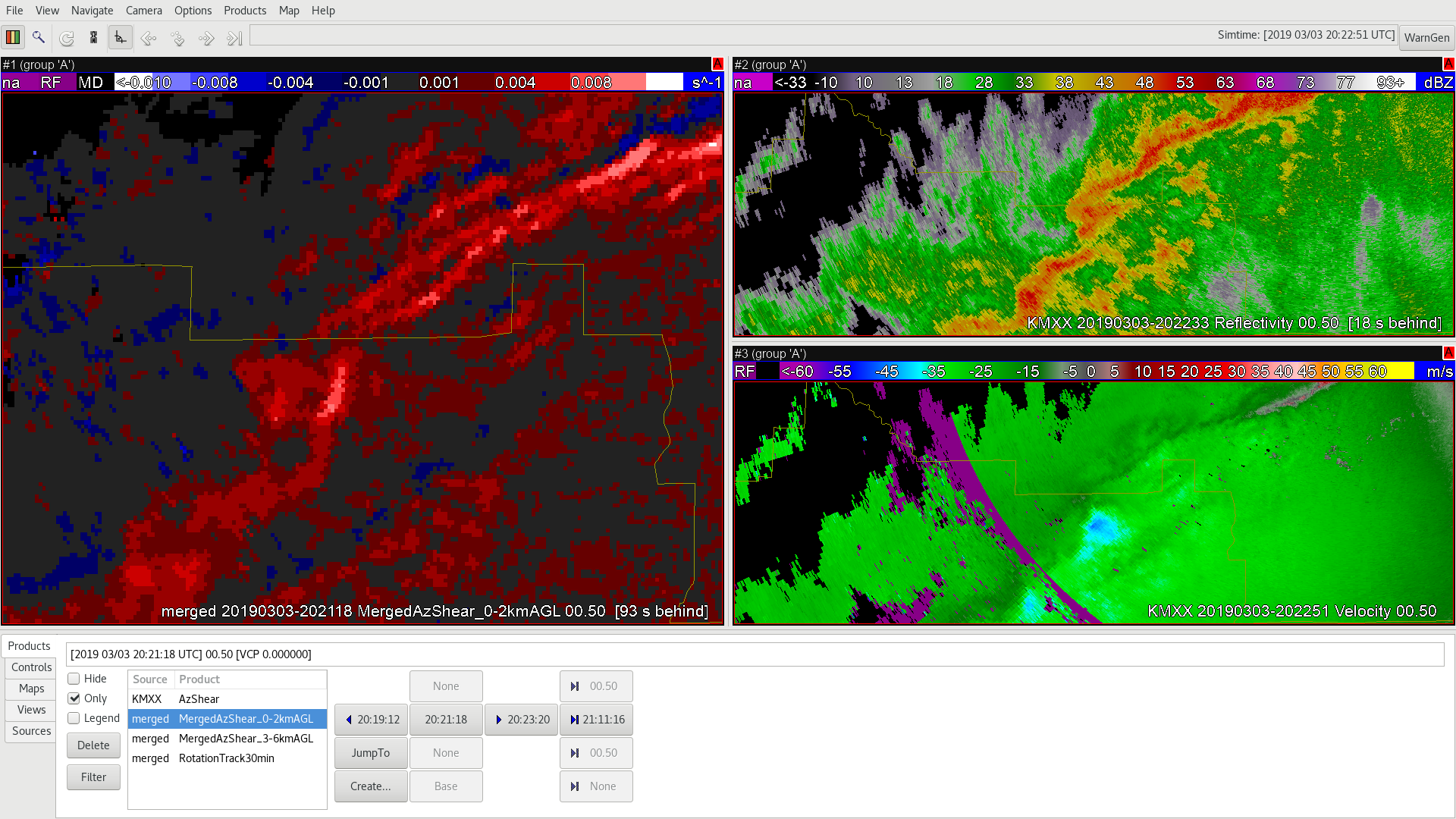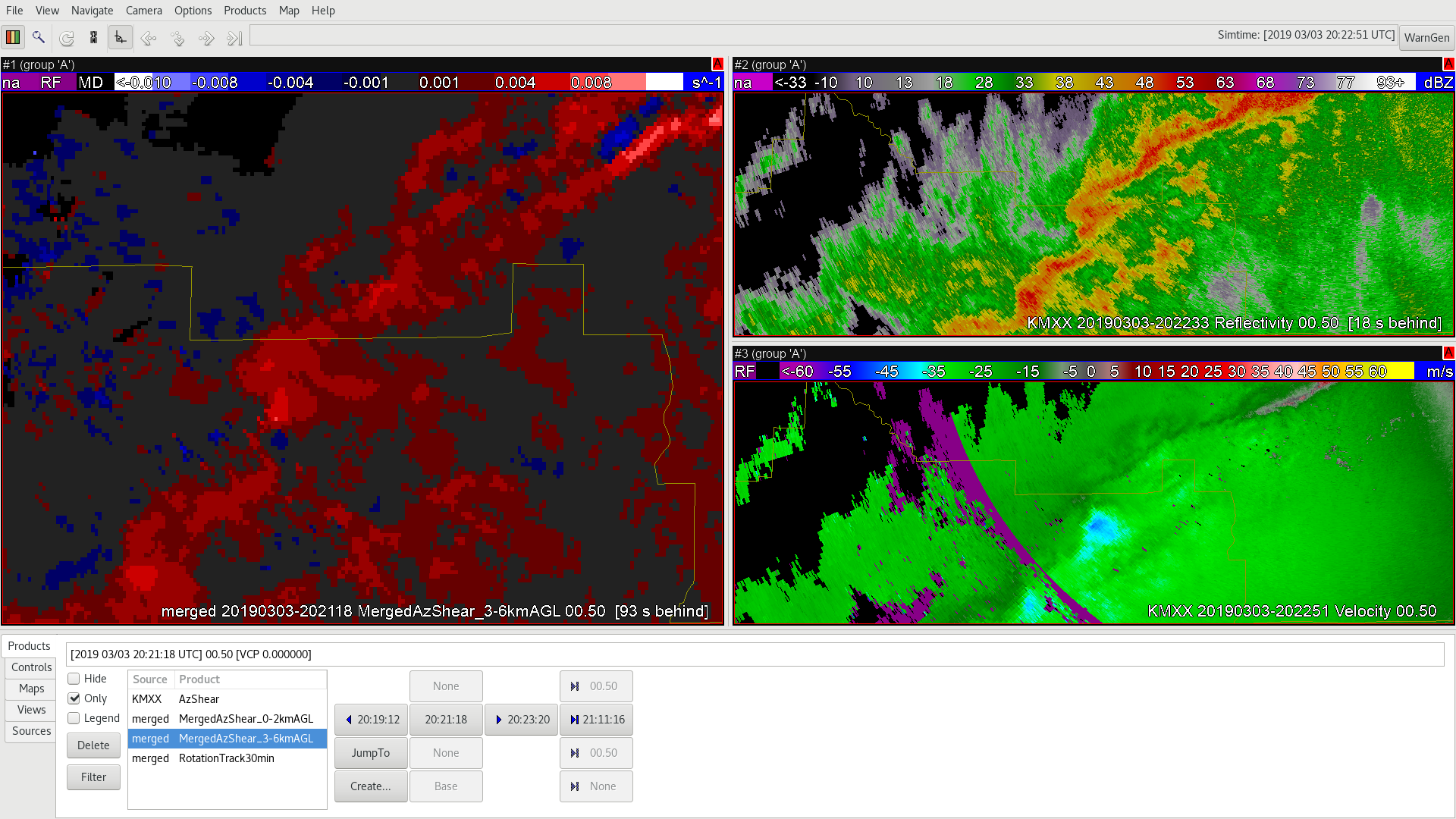The single radar AzShear product seems particularly useful in the warning environment, especially as an SA tool. At 2307Z the AzShear product highlights an area of enhanced shear near the inflow region of a supercell SW of a KGWX (immediately north of the little red marker) whereas the base velocity has no discernible couplet. Roughly 11 minutes later, at 2318Z, the couplet was clearly visible on base velocity with AzShear even more pronounced value. As an SA tool, AzShear shows promise for highlighting potentially problematic areas before fully reflected in the base products. This product has the potential to help with warning lead times, especially if the storm is in a favorable tornadic environment.
— Stanley Cupp
2307Z AzShear, base reflectivity (top right), and storm-relative velocity (bottom right)
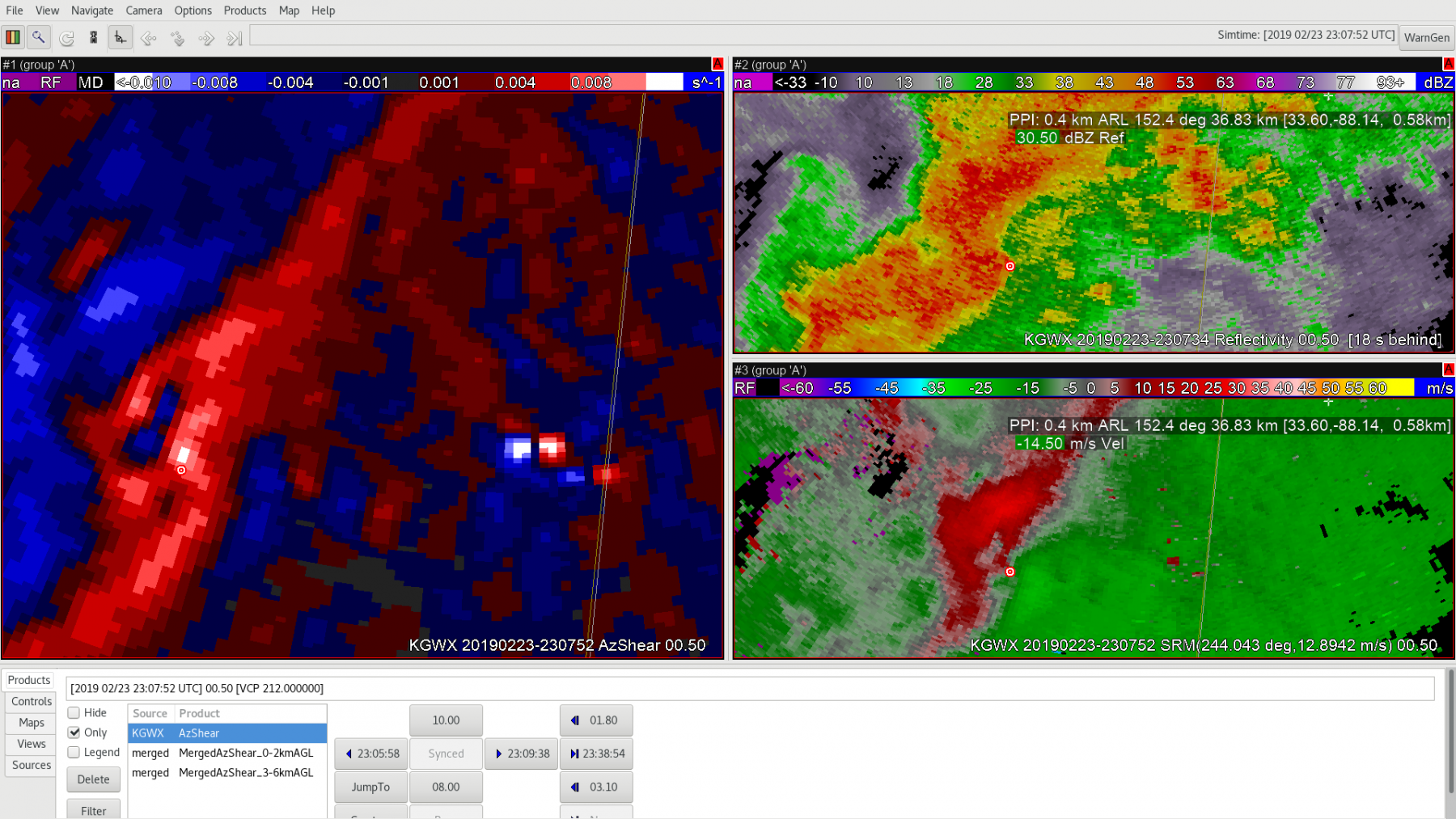
2318Z AzShear, base reflectivity, and storm-relative velocity
